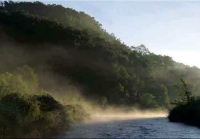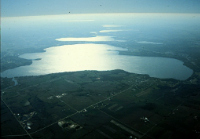Nine key element watershed plans
Implementing plans on a watershed basis to restore and protect Wisconsin’s waters
Watershed plans consistent with EPA's nine key elements provide a framework for improving water quality in a holistic manner within a geographic watershed. The nine elements help assess the contributing causes and sources of nonpoint source pollution, involve key stakeholders and prioritize restoration and protection strategies to address water quality problems.
Understanding the nine key elements
Development of watershed-based plans funded with Section 319 funds must be consistent with EPA's nine elements. The elements can be used in watersheds with impaired waters or used to protect watersheds not yet impaired.
The first three elements characterize and set goals to address pollution sources. The remaining six elements determine specific resources and criteria to implement and evaluate the plan.
Summary of the nine minimum elements:
- Identify the causes and sources
- Estimate pollutant loading into the watershed and the expected load reductions
- Describe management measures that will achieve load reductions and targeted critical areas
- Estimate the amounts of technical and financial assistance and the relevant authorities needed to implement the plan
- Develop an information/education component
- Develop a project schedule
- Develop the interim, measurable milestones
- Identify indicators to measure progress and make adjustments
- Develop a monitoring component
The nine elements can provide a structure to develop:
- Land and water resource management plans
- TMDL implementation plans
- Lake management and protection plans
- River protection plans
Resources
The following resources provide assistance for developing Nine Key Element watershed plans.
- U.S. EPA Handbook for Developing 9 Key Element Plans
- U.S. EPA quick guide for developing 9 key element plans
UW-Extension - A citizens guide to watershed planning
Kinnickinnic River, St. Croix County - ATCP 50 – Wisconsin's soil and water resource management rule
- TMDLs
- Water projects search
Tools
The following tools can be used to develop or implement nine key element watershed plans.
- STEPL
- EVAAL
- SnapPlus
- TMDLs
- Nutrient reduction strategy
- Water quality monitoring
- Water condition assessments and reporting
- UWEX monitoring
- Water projects search
- Wetlands
- DATCP soil and water conservation programs
- Local Ordinances
- Healthy watersheds assessments
Funding
The following funding resources can be used to develop and/or implement nine key element watershed plans.



